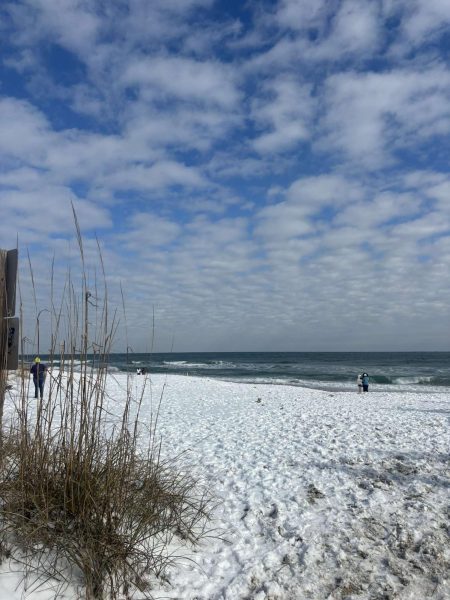Wilmington could see more offshore wind farms after recent executive order
Gov. Roy Cooper signed Executive Order 218 on Wednesday to reaffirm North Carolina’s commitment to utilizing offshore wind energy and continue the state’s path towards a clean energy economy. This strategy could finally bring development to the waters off Wilmington’s coast, which have been deemed ripe for the harvesting of wind energy.
The order lays out targets for electricity production through offshore wind farms, calling for 2.8 gigawatts of offshore wind energy (approximately enough to power 2 million homes for a year) produced yearly by 2030, rising to eight gigawatts by 2040.
Additionally, Cooper’s guidance calls for the appointment of a clean energy economic development coordinator to oversee economic opportunities related to clean energy, as well as a task force created specifically for strategies related to offshore wind energy.
Offshore wind energy is a relatively new strategy for the age-old practice of harvesting the power of the wind, with the first offshore wind project, Block Island Wind Farm beginning operations in 2016.
At offshore wind farms, turbines are constructed onto floating platforms located in coastal waters that are then tethered to the seafloor. The locations are strategically placed to take advantage of higher, more consistent wind speeds at sea.

The coastal waters adjacent to Wilmington possess two of the state’s three wind energy areas, areas that the Bureau of Ocean Energy Management has deemed optimal for offshore wind harvesting.
However, neither of Wilmington’s wind energy areas have been leased out for commercial development, but this seems to be something that Cooper is eager to change, with the order’s section four being devoted to leasing and developing the state’s wind energy areas.
The section states the will of Cooper’s administration to “collaborate with the Bureau of Ocean Energy Management and other federal partners to advance the leasing and development of North Carolina’s existing wind energy areas.” This likely means that Wilmington is set to become the focus of developments in the near future.
North Carolina’s third wind energy area is located around 30 miles off the coast of the Outer Banks. Referred to as the Kitty Hawk Offshore Wind project, this area is substantially further along in the development stage than those in Wilmington, with construction plans currently submitted to the Bureau of Ocean Energy Management (BOEM) for a large wind farm that is set to get underway around 2024.
The Public Strategy Group predicts substantial economic gains to the Outer Banks as a result of their wind energy developments, forecasting a gain of approximately 800 jobs, as well as generating $2 billion over the next decade.
It would not be much of a reach to say that incredibly similar developments occurring in Wilmington would bring along the same economic boom.
Cooper has previously made efforts to encourage the utilization of the state’s wind energy resources, partnering with Maryland and Virginia back in October to create the Southeast and Mid-Atlantic Regional Transformative Partnership for Offshore Wind Energy Resources, otherwise referred to as SMART-POWER, which sets out to share information in regards to the implementation of offshore wind energy into the energy profile of the states.
With Wednesday’s executive order, Cooper made clear that clean energy production and the economic development that comes along with it remain high on the list of priorities in his administration.
“Transitioning to a clean energy economy is good for the environment and good for the economy,” said Cooper in a tweet. These opportunities in offshore wind energy will create good-paying jobs and help us combat climate change.”










